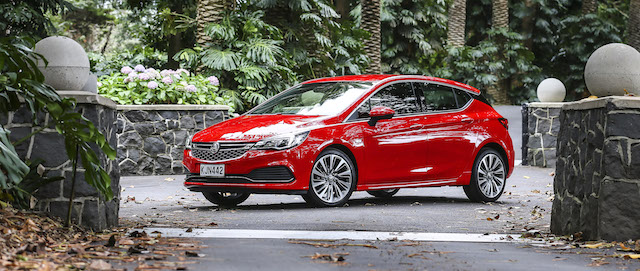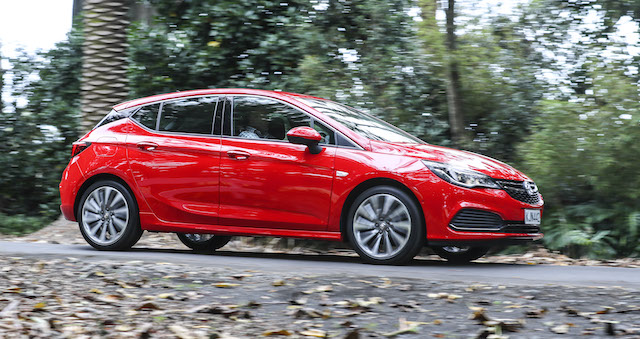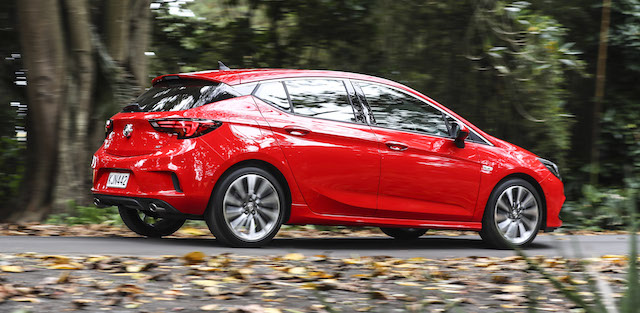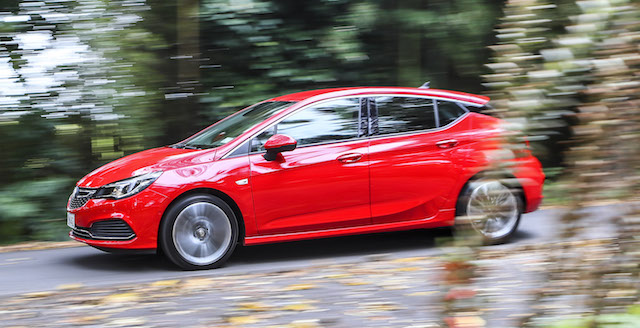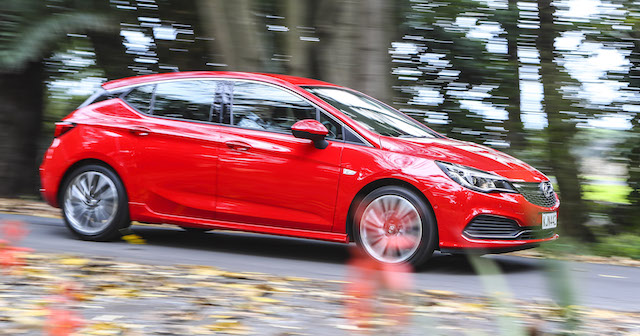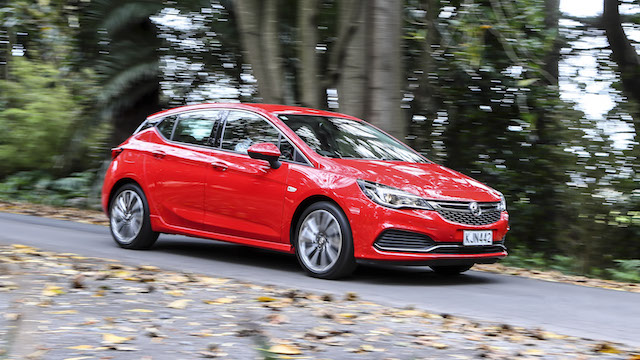
Holden has tasked its award-winning advertising agency, Special Group, to change how Holden is perceived in New Zealand. It wants the agency to help transform the brand, give it a taste of Kiwi, point it more towards premium space.
It’s not that Holden has gone away; just that, over time, the brand has lost its relevance. Holden itself says so, based on the results of marketing research on both sides of the Tasman.
It came before and after Holden announced officially two years ago that it would no longer build cars in Australia from October 2017, that it would put the Holden badge on models from parent General Motors’ (GM) global plants.
Its researchers hit the streets. “What’s great about Holden?” they asked. The answers were supplied by Holden’s NZ managing director Kristian Aquilina at the launch of the new Astra hatchback in Napier this week: “Commodore, Commodore, V8 Supercars, Commodore, Commodore …”
Clearly, Joe Public reckoned Holden was a one-trick pony. Its almost 70-year history in Australia boiled down to one nameplate. Notable handles such as Kingswood, Belmont, Monaro,Torana were lost in time.
The upshot of the research was that Holden was seen as a brand for somebody else. Immigrants, for instance, had no knowledge of the Aussie-Kiwi car company. “We’ve got work to do,” said Aquilina. “It’s not an overnight fix.”
Holden wants very much to remain the main character in the story of Downunder car culture, albeit with cars built in factories in Germany, Poland, Thailand, South Korea, Canada, and the United States. The Astra is a rebadged Opel from Germany but built in Poland.
The television ad for the five-door model is showing now. “The all-new Holden Astra from Europe will get Kiwis talking”, it says. Whether or not it works, time will tell. Holden doesn’t go public with sales targets – that stuff stays in-house. But it is “very confident” Astra, the 2016 European Car of the Year, will sell well.
It needs to, because it “defines the future of Holden,” says Aquilina. It deserves to, because it’s a crackerjack small car, perhaps Holden’s best ever. But more on that down the page.
Holden NZ marketing manager Marnie Samphier says the Astra advertisement is the latest in a string of locally commissioned productions. “It follows real success we’ve enjoyed with our brand ad ‘The Chop’ and the new Colorado ad, which was shot in Thames,” she said.
“Our brand is making bold new steps in an exciting new direction, we’re evolving and maturing, and the way we talk about ourselves also speaks volumes about where we’re heading.
“We have received significant positive feedback about our local ads. There is huge support and appreciation for local productions. Kiwis love seeing themselves on screen and recognising locations they’re familiar with.
“It reinforces the fact that even though Holden is becoming more global in terms of where we source our vehicles from, we still have New Zealand customers at the very heart of everything we do.
“We’re ensuring our product has a very Kiwi voice and flavour, to help resonate with passionate Holden enthusiasts – and also connect with people who hadn’t necessarily considered buying a new Holden before.”
It’s early days but the focus on the everyday Kiwi might be reflected in sales. After two months of 2017, the NZ Transport Agency has logged 2780 Holden registrations, compared to 2138 at the same time last year. That’s growth of 30 per cent.
The 2780 is made up of 2034 passenger vehicles and 746 commercials. Last year, the 2138 registrations in January and February comprised 1609 passenger vehicles and 529 commercials. Passenger vehicles so far this year are therefore up 26.5 per cent and commercials 41 per cent.
Holden appears to have locked into the growing tourist industry quicker than it did last year. Sales to rental agencies so far this year account for 785 vehicles, compared to 409 for the same period in 2016. That’s a hike in rental sales of 92 per cent. Astra has yet to appear in rental numbers.
Tourists from Europe who get behind the wheel of the Astra will find the Downunder car is a different from the one at home. Why? Because Holden engineers have tailored the electric power steering and stability control system to suit road surfaces in this part of the world.
“The end result is a vehicle which promises some of the sharpest dynamics and most efficient performance in the small car class,” says the lead development engineer, Kristian Johannessen.
“We have contributed to changes associated with ride and handling, as well as suspension and steering inputs. We’ve worked with the engineering homeroom to develop special calibrations which find favour with New Zealand and Australian motorists.
“For example, the high camber of the road in our part of the world is very different to that found in Europe, as such we retuned the steering to better compensate for the impact of this camber.
“Furthermore, we took the opportunity to get the steering feel that is a hallmark of the Holden brand with a focus on good on-centre feel, with a nice intuitive effort build up.”
The five-door Astra is available in six variants (R, RS, RS-V) with two turbocharged petrol engine options: sweet-revving 1.4- and 1.6-litre units mated to either six-speed manual or six-speed automatic gearboxes. The sedan range will follow later in the year.
The entry-level R is the only variant to use a new all-aluminium 1.4 engine, good for 110kW/240Nm. The manual version costs $30,990, the auto $32,990. A driver assistance pack with electronic aids such as collision alert is an option for the R at $1500.
The RS and RS-V get the 1.6-litre unit, which delivers 147kW/300Nm. The RV manual is $33,990, the auto $35,490. Corresponding prices for the top-line RS-V are $36,990 and $38,490. A $1990 ‘touring pack’ option on the RS-V includes adaptive cruise control.
There’s a lot to like about the Astra and its powertrains. The cabin is a comfortable, refined layout, which, for a small car, does a good job of toning down road noise. Steering is every-which-way adjustable; passenger room in the rear is pretty good; boot space is adequate.
The highlight is the way Astra rides and handles. It’s around 160kg lighter than the car it replaces and the cut in weight, combined with an all-new GM platform riding on MacPherson struts up front and a Watts link suspension at the rear, delivers a hatchback that can be driven very quickly on demanding roads without losing composure.
There is minimum body roll; turn-in is sharp; mid-corner adustments don’t faze it; steering is accurate with excellent weight for an electric set-up; Sport mode on the six-speed auto is intuitive and holds on to the gears; the manual ‘box is a gem, perhaps best with the 1.4-litre engine.
The Astra and its five-star safety rating gets the latest MyLink infotainment system with Apple CarPlay and Android Auto.The R and RS models include a 7-inch colour touch screen with Bluetooth and voice recognition, while the RS-V adds satellite-navigation and voice recognition together with a larger 8-inch colour touchscreen.
Its arrival means that rivals such as Toyota Corolla, Mazda3, Volkswagen Golf, Honda Civic, Ford Focus and so on will all have to make a little room for Astra. It’s that good. Says Aquilina: “The only thing not premium about the new Astra is the price.”

